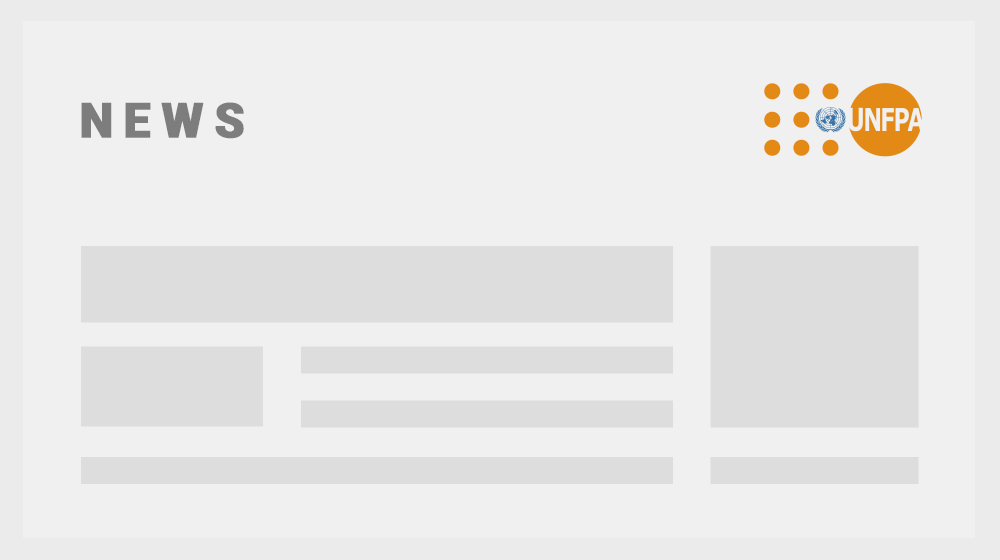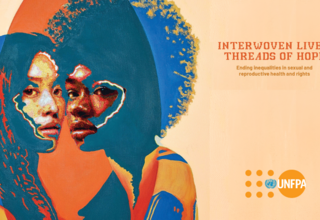Statement of UNFPA Executive Director, Dr. Babatunde Osotimehin for the State of World Population 2015 launch
Welcome to the launch of UNFPA’s State of World Population 2015, “Shelter from the Storm: A Transformative Agenda for Women and Girls in a Crisis-Prone World.”
Imagine being nine months pregnant, and you start having contractions. But gunfire in your village has cut you off from neighbours, friends and health care. So you deliver by yourself.
Imagine being a teenage girl in a camp for displaced people. You go outside to a washroom at night, and a man attacks you. You have nowhere to go for help.
Imagine going to your local clinic for medicines that prevent transmitting HIV to your newborn, but you find it in ruins after an earthquake.
While things have improved over the past two decades, horrifying scenes like these are still a painful reality for women and adolescent girls in crises around the world.
Women’s health and rights are under siege when natural disasters topple hospitals, when conflicts undermine rule of law and heighten vulnerabilities to rape, when an epidemic makes it unsafe for expectant mothers to find the services of a midwife.
Without the usual protection of family and community, women and adolescent girls can easily become victims of sexual violence, unintended pregnancies and sexually transmitted infections.
Consider the facts:
Every day, 507 women and adolescent girls die during pregnancy and childbirth in crises like earthquakes and conflicts.
One hundred million people need humanitarian assistance this year. More than 25 million of them are women and adolescent girls of childbearing age.
Nearly 60 million people have been uprooted by conflict—the largest number since the end of the Second World War.
The risks and vulnerabilities for women and girls in these situations are disproportionately high.
The services and support available to them in crises are disproportionately low.
UNFPA’s “Shelter from the Storm” calls on governments and assistance groups everywhere to move women’s health and rights, and in particular women’s sexual and reproductive health, from the backseat to the front seat of the world’s humanitarian agenda.
The State of World Population calls for better shelter to help women and adolescent girls weather the storms of disasters and conflicts all around us today.
Critical basic services like maternal health and contraception are necessary to save women’s lives and enable adolescents to make a safe and healthy transition to adulthood, with their rights and dignity intact.
The current shelter is unable to protect all who need it.
The need for humanitarian assistance has reached record levels. Last year, for example, the United Nations needed a record $19.5 billion to respond to crises around the world. Yet it faced a record $7.5-billion gap for humanitarian response. UNFPA also faces significant shortfalls for its actions to protect the health and save the lives of women and young people.
The demand for assistance is clearly outpacing the supply. And that makes current arrangements unsustainable.
The State of World Population calls for a bold new four-point transformative agenda for humanitarian assistance.
First, meet all acute need—and recognize that women’s health and rights can no longer be treated as an afterthought. Whether women live or die in a crisis depends on whether they can get sexual and reproductive health services.
Second, step up investments in prevention and preparedness to mitigate the impact of future crises. Today, only 5 cents of every humanitarian dollar goes to prevention and preparedness.
Third, invest in resilience—of governments, institutions, communities and individuals. One path to resilience is through development that is inclusive and equitable and that respects and protects everyone’s rights, including reproductive rights and the right to sexual health.
The fourth—and perhaps most important—point of the UNFPA transformative agenda is to tear down the wall between humanitarian assistance and development.
Actions to promote equitable development—that benefits women, men, boys and girls alike—can build resilience and cushion the shock when disasters strike or conflicts break out.
Humanitarian response, if it’s done in a way that promotes gender equality and meets everyone’s needs, including the sexual and reproductive health needs of women and adolescent girls, can lay the foundation for rapid recovery and post-conflict, resilient development.
UNFPA sees this transformative agenda as the way towards a world where women and girls are no longer disadvantaged in multiple ways, but become equally empowered to realize their full potential—before, during and after a crisis.




